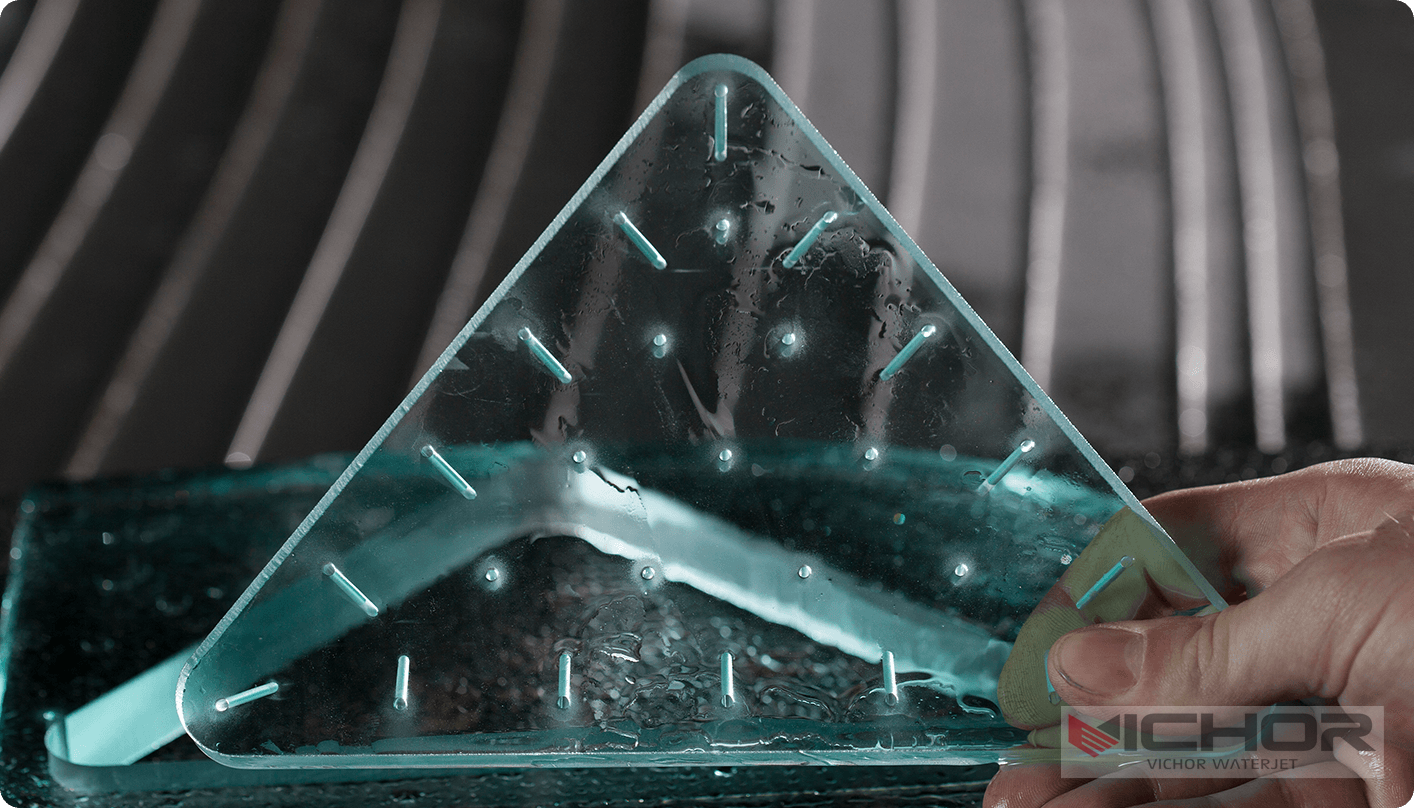
A Deep Dive into Wet Jet Cutting Technology
In the relentless pursuit of industrial efficiency and unparalleled precision, manufacturers constantly seek technologies that offer a superior edge. Among the myriad of cutting and processing methods, one stands out for its unique blend of power, precision, and versatility: Wet Jet Cutting. This advanced process, often overshadowed by its more established counterparts, is revolutionizing how industries approach material fabrication. But what exactly is wet jet cutting, and why is it becoming an indispensable tool in sectors ranging from aerospace to electronics? This article demystifies the technology, exploring its principles, applications, undeniable benefits, and the practical challenges operators may face. We will also highlight how innovators like VICHOR are pushing the boundaries of what’s possible with this dynamic technology.
The Core Principles of Wet Jet Cutting
At its heart, wet jet cutting is an abrasive waterjet cutting process that has been refined for enhanced performance and control. To understand it, one must first break down its components. The system starts with a high-pressure pump, often intensifier-based, that pressurizes ordinary water to extreme levels—typically between 60,000 and 90,000 PSI. This ultra-high-pressure water is then forced through a tiny orifice, usually made of sapphire or diamond, creating a coherent, supersonic stream of water.
This pure waterjet is powerful enough to cut soft materials like foam, rubber, and food products. However, for cutting metals, ceramics, stone, and composites, an abrasive substance is introduced into the stream. This is where the “wet jet” truly comes to life. The high-velocity water stream creates a vacuum in a mixing tube, drawing in a precisely metered flow of abrasive garnet. The water accelerates these abrasive particles, creating a focused, erosive jet that can slice through incredibly hard materials with astonishing accuracy. The term “wet jet cutting” effectively describes this potent mixture of high-pressure water (the “wet” component) and accelerated abrasive (the “jet” component) working in concert.
Where Wet Jet Cutting Excels: Key Industrial Applications
The versatility of wet jet cutting is its greatest strength. Because it is a cold-cutting process (it does not generate significant heat-affected zones), it is suitable for a vast array of materials that would be damaged by thermal cutting methods like laser or plasma.
Metal Fabrication: From cutting intricate patterns in thin aluminum sheets to slicing through thick titanium and armor plate for aerospace and defense applications. It is perfect for creating prototypes and complex parts without altering the material’s inherent properties.
Stone and Tile Work: Wet jet cutting is the go-to method for creating detailed designs, sink cutouts, and complex shapes in granite, marble, and porcelain. Its precision allows for minimal material waste.
Composite Materials: The aerospace and automotive industries rely heavily on wet jet cutting for carbon fiber and fiberglass composites. The cold cut prevents delamination and burning of the resin, preserving the material’s structural integrity.
Glass and Ceramics: From creating beautiful artistic designs in glass to cutting delicate electronic substrates, the waterjet’s pressure-controlled cutting allows for clean, chip-free edges.
Food Industry: In a surprising application, pure waterjet wet jet cutting is used for portioning frozen foods, cakes, and ready-made meals. It is a hygienic, precise, and waste-minimizing solution.
The Unmatched Advantages of Adopting Wet Jet Technology
Choosing wet jet cutting over other technologies offers a compelling list of benefits that directly impact quality, cost, and capability.
No Heat-Affected Zone (HAZ): This is the paramount advantage. Since no heat is generated, the material’s microstructure remains unchanged. There is no hardening, warping, or alteration of temper, which is critical for metals and essential for composites and plastics.
Material Versatility: One machine can cut virtually any material—from soft foam to hardened tool steel. This reduces the need for multiple dedicated cutting systems, simplifying the production floor and offering immense flexibility for job shops.
High Precision and Edge Quality: Modern wet jet cutting systems, especially those from precision-focused brands like VICHOR, offer exceptional accuracy, often within a few thousandths of an inch. The edge quality is typically very good, often requiring no secondary finishing operations.
Environmentally Friendly: The process produces no hazardous fumes or vapors. The primary waste is a slurry of water and abrasive, which can be settled out and managed responsibly. The water itself can be recycled within a closed-loop system.
Efficiency and Reduced Waste: The narrow kerf (the width of the cut) and the ability to nest parts very closely together significantly reduce material waste, leading to substantial cost savings, especially when working with expensive materials.
Navigating Common Challenges in Wet Jet Cutting Operations
While powerful, wet jet cutting is not without its challenges. Understanding these common issues is key to maintaining peak operational performance.
Abrasive Consumption and Cost: The continuous consumption of garnet abrasive represents a significant ongoing operational expense. Inefficient abrasive feed systems can lead to waste and higher costs.
Nozzle and Component Wear: The intense abrasion leads to wear on the orifice, mixing tube, and focus tube. These are consumable parts that require regular monitoring and replacement to maintain cut quality and accuracy. Premium systems from manufacturers like VICHOR often feature advanced nozzle designs that extend component life and optimize abrasive mixing.
Cut Speed vs. Cut Quality Trade-off: Faster cutting speeds can lead to a tapered edge (wider at the top than the bottom) and a rougher surface finish. Achieving a perfect, taper-free cut requires slower speeds, which impacts productivity. Advanced software can dynamically control speed and head tilt (taper compensation) to mitigate this issue.
Water Management: Dealing with the spent water-abrasive slurry requires a separation and water reclamation system. Poor water quality from the source can also damage the high-pressure pump, necessitating robust filtration.
Initial Investment and Operational Knowledge: The upfront cost of a high-quality wet jet cutting system can be substantial. Furthermore, operators require specific training to understand the intricacies of pressure settings, abrasive feed rates, and cut head maintenance to achieve optimal results.
The Future of Precision: Innovations in Wet Jet Cutting
The technology behind wet jet cutting is far from static. Continuous innovation is driving it towards greater efficiency, precision, and connectivity.
Higher Pressures: Pump systems are increasingly capable of stable operation at pressures exceeding 90,000 PSI, enabling faster cutting speeds and the ability to tackle even thicker materials.
Intelligent Control Systems: AI and machine learning are being integrated to predict and automatically adjust for nozzle wear, maintaining consistent cut quality throughout the life of a component. Companies like VICHOR are at the forefront, developing smart systems that self-optimize cutting parameters in real-time.
5-Axis Cutting: The adoption of 5-axis cutting heads is becoming more common. This allows the jet to tilt and cut beveled edges without taper, eliminating the need for secondary machining on many parts and opening new design possibilities.
Reduced Environmental Footprint: Research into alternative, sustainable abrasives and more efficient water recycling systems is ongoing, aiming to make wet jet cutting even more eco-friendly.
Enhanced Connectivity: Full IoT (Internet of Things) integration allows for remote monitoring, predictive maintenance, and seamless data flow from design (CAD) to finished part, aligning wet jet cutting with the principles of Industry 4.0.
In conclusion, wet jet cutting is a remarkably powerful and flexible manufacturing technology that solves critical problems associated with thermal cutting. Its ability to cold-cut virtually any material with high precision makes it an invaluable asset across diverse industries. While challenges like abrasive cost and component wear exist, they are manageable and are being steadily overcome through technological advancement. As industry leaders like VICHOR continue to innovate, pushing the limits of pressure, control, and automation, the future of wet jet cutting promises even greater levels of efficiency and precision, solidifying its role as a cornerstone of modern manufacturing.
continue reading


